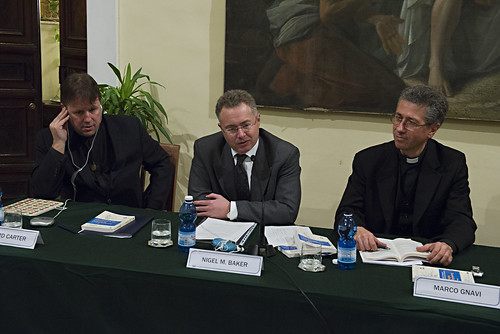
On 1 February, I attended a special event in a special place.
The Basilica of San Bartolomeo all’Isola in Rome was dedicated in 2000 by Pope John Paul II to the new martyrs of the 20th and 21st centuries. The moving memorial, managed by the Sant’Egidio Community, is significant because it is ecumenical.
The martyrs are not all Catholic. And the event I attended there was to help launch a book, “Racconti di Pace in Oceania” (“Tales of Peace in Oceania”) by Monica Attias, in honour of seven men who came from the global Anglican communion.
These were the Seven Martyrs of the Melanesian Brotherhood, a community of religious men who serve Melanesians of all ethnicities, tribes and backgrounds in the Solomon Islands.
They are a simple community, rejecting worldly goods, concentrated on bringing together in unity and peace the fragmented and fissiparous peoples of the 992 islands and atolls that make up the country. And the deaths of the Seven in 2003 marked both the nadir of the inter-communal strife that had brought the Solomon Islands to its knees, and helped to bring about its end.
In the international and diplomatic community, we talk a great deal about the theories and practice of peacemaking. University courses are dedicated to the subject. Pope Benedict placed the role of the peacemaker at the heart of his message on the World Day of Peace. But as I sought to show in my brief review, the martyrs of the Melanesian Brothers, though they had not read the texts or studied the courses, were intrinsic peacemakers.
They had success when others – the international community, local authorities, even local churches – despaired or looked the other way. And the shock of their sacrifice forced the train of events that pulled the Solomon Islands back from the abyss.
Diplomats argue a lot about peacemaking. I was pleased, last week, to be able to honour men who showed us how it should be done, and paid the ultimate sacrifice while doing so.
